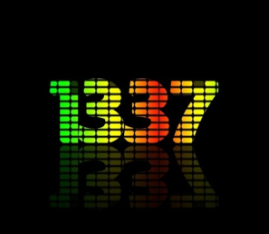I’m reconsidering my terminal emulator and was curious what everyone was using.
When I’m using a tiling window manager, I use kitty, because I like its speed and support for font ligatures. When I’m using a Desktop Environment like Gnome or KDE I usually don’t use the terminal at all, but if I need it, I use the default emulator.
Silva? Are you Portuguese or Brazilian?
Neither, actually. I don’t know why I call myself silva, but that’s not my real name.
Lol thats a common surname here in Brazil. It means jungle in latin so the priests used to give this surname to converted natives.
Interesting. In English, “Silvan” mean a spirit that lives in the woods. It’s often used in literature as a synonym for “elves.”
Probably the same root
That’s what I was thinking, but I noped out of a linguistics minor after a year when I realized it was never going to turn into “learning a bunch of languages” and was instead spending all your time doing sentance diagramming.
Sorry for the off-topic question, but I’m still trying to wrap my head around basic linux concepts: you use “tiling window manager” and “desktop environment” as if they were mutually exclusive options. What’s the relationship between them?
Thanks!
Window Managers manage windows as the name suggests and control how they are displayed and interacted with. A window manager is one component of a desktop environment which provides other facilities like compositors, task bars, status trays, task switchers, configuration applets, virtual desktops, and perhaps some default applications for basic things like terminal, file management, text editing, connection management, and image viewing. Some desktop environments feature extensive plug-in systems ( extensions ) and vast application ecosystems.
In the early days of Linux, there were no “desktop environments” and you would run a window manager directly over the window server ( eg. X11 ) with applications running directly over the WM. Proprietary UNIX introduced desktop environments like CDE, OpenWindows, and NeXTstep but, as they were proprietary, Linux lacked them. This changed with the advent of KDE and GNOME soon after. These days, the vast majority of Linux users are working with a desktop environment ( probably still one of these two though there are now others ).
A timing window manager in particular is a window manager that allows auto arranging and resizing applications to share the screen ( typically using keyboard commands ). The goal of a tiling window manager is that application views do not overlap and that the full desktop space is used efficiently. A floating window manager in contrast allows windows to overlap and leaves positioning, resizing, visibility, and focus up to the user. The desktop itself may be plainly visible and may even have clickable icons or applets displayed on it. Interaction with windows in a floating window manager is usually done with the mouse. Windows and Mac are examples of the floating metaphor so that is the one most of us are more familiar with. Any given window manager can incorporate both floating and tiling ideas and features but most WMs lean pretty heavily one way or the other.
Technically, a window manager is just a special kind of application. In X11, it is not even required. You can run applications directly without one but, if you run more than one application, you will quickly understand the value of a window manager. The value of a full desktop environment is more a matter of preference. Most people welcome them or consider them essential. Others see DEs as bloat. The middle ground is assembling a desktop experience yourself from a group of applications you select for that purpose from the window manager up.
alacritty
Personally I’ve been using gnome-terminal for quite a while and was fairly happy except that I needed to maintain gnome-terminal and libvte patches to get notification support. Having some sort of notification when a long-running command completes is very important to my productivity.
I’ve been using Konsole but not fully happy.
- No hyperlink support.
- Selection is lost when my prompt updates (I have the time so that I know when I have started commands).
I’ve been looking at other options but none-of them feel quite right.
Alacritty:
- No unlimited scrollback.
Kitty:
- Selection bug with updating prompt.
- No unlimited scrollback.
Wezterm:
- No unlimited scrollback.
Terminator:
- Has this terminal group bar that I can’t get rid of.
- No notification support.
I realize that I am probably going to have to make a compromise (probably just go back to gnome-terminal with patches) but I figured it would be interesting to see what everyone else was using and make sure I didn’t miss something.
To me the important features are:
- Unlimited scrollback.
- Notification support (ideally with the 777 Notify command, but if the terminal bell can make a notification that is fine).
- Clean UI. (I don’t use tabs so need to be able to hide the tab bar)
- Hyperlink support.
I’m pretty sure you can set alacritty and kitty to a ridiculously high number of scrollback lines, like at least several trillion. I think I just add 4 zeros on to the default and I’ve never had enough output for it to run out of scrollback. At some point you’re going to run out of ram or storage for storing scrollback so you can’t realistically have unlimited scrollback without doing something ridiculous.
I just use
konsole, which is the default terminal emulator for KDE. I don’t need anything fancy, just something basic to run commands, updates, a few scripts, etc.konsoleis low-key a great terminal. It’s really snappy, supports ligatures, and looks good. It’s one of my favorite KDE applications and the one I miss most when it’s not available.
I like my kitty

I recommend black box. https://flathub.org/apps/com.raggesilver.BlackBox it is the nicest and most intergrated terminal on gnome and I use it daily and have zero issues
Oooh, this looks perfect for me. However how do hyperlinks work? I can see that they are styled and have a unique cursor but I can’t for the life of me figure out what I need to do to actually activate them. I’ve tried click, Ctrl-click, Shift-click, Alt-click 😅
https://gitlab.gnome.org/raggesilver/blackbox/-/issues/297 it could possibly be this bug. I am not entirely sure. My use case does not feature many hyperlinks so sorry if I got ya excited for something you can’t use
cool-retro-term 😎 to live in retro cyberpunk dreamland
urxvt. It works good enough and doesn’t use much memory.This is what i use as well.
I love wezterm, primarily because it is cross platform. The most important factor to me is being able to use the same one on Windows, Mac and Linux, because I use all three on a regular basis and don’t want to maintain multiple configs. However, wezterm currently has a bug that prevents it from opening on Wayland+Nvidia which forces me to use something else on Linux. None of the other ones get close imo.
I use vterm in emacs if I’m doing something quick, but if I’m actually using the terminal for a task, I use blackbox because it integrates nicely with gnome. I just use vterm if I’m using exwm.
Yakuake. I’ve been using it for more than a decade and love it.
Alacritty for me
deleted by creator
I really love Tabby
Tabs, CMD, SSH, Powershell… all included. It has multiple profiles, can be used portable, has themes and Integrations, like one for Docker
Never need anything else imo 😊
Tabby is great, but takes considerably longer to start. When I want a terminal, I want it instantly. Kitty and Alacrity are two of my favorites.
Basically what Silva said. When I’m going out of my way to install something, kitty. Else I roll with my DE’s default, which in my case is usually gnome-terminal.












